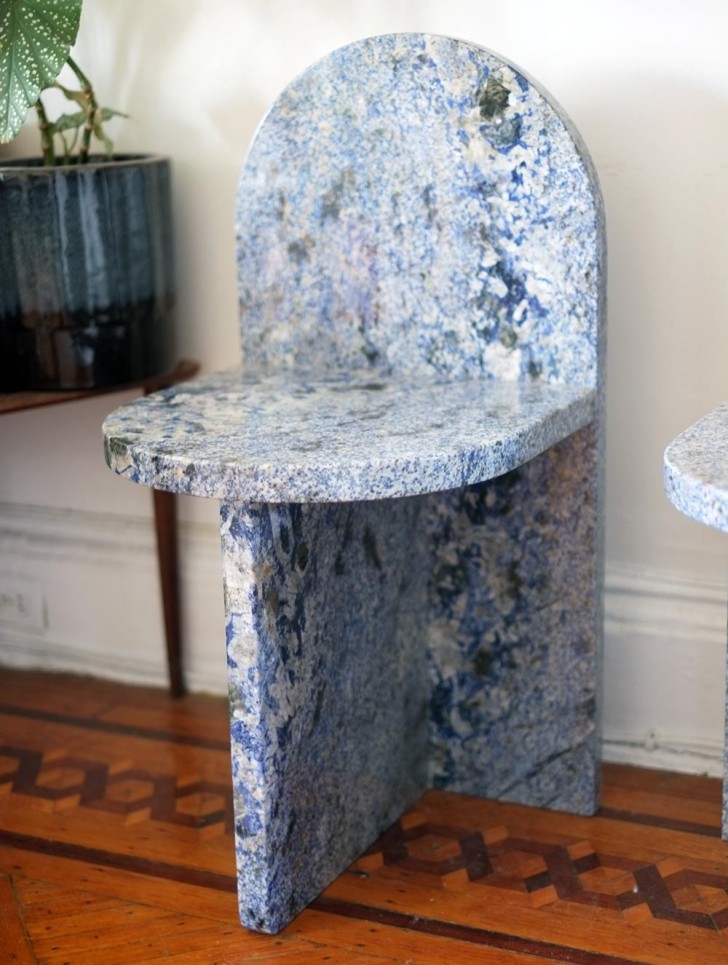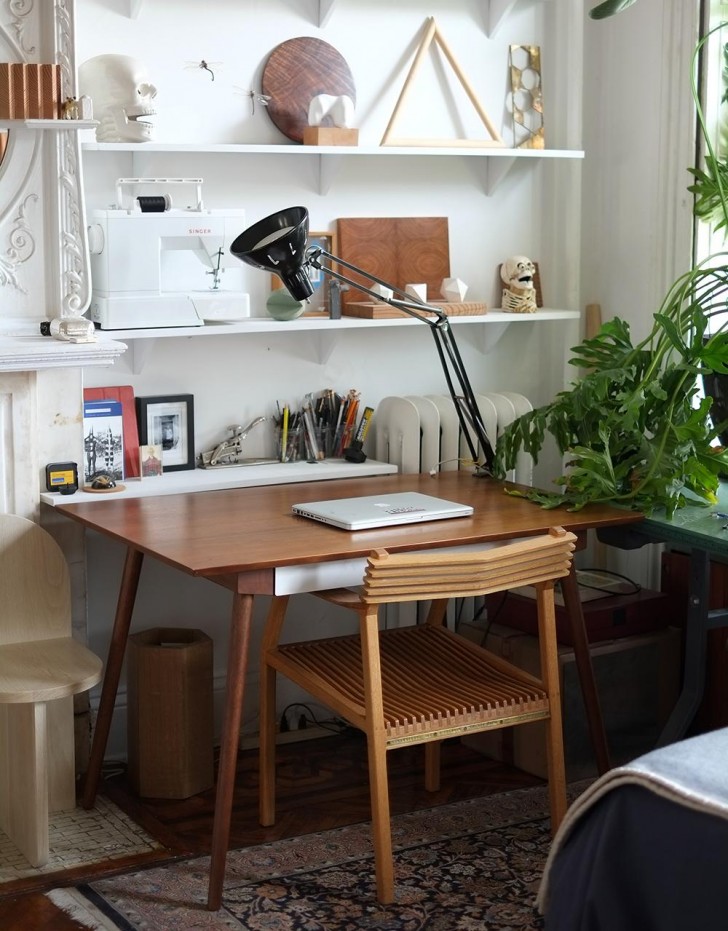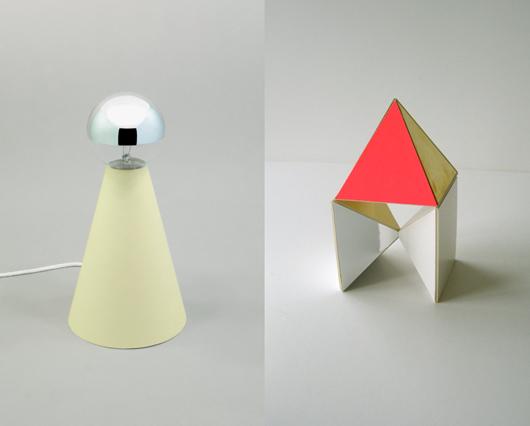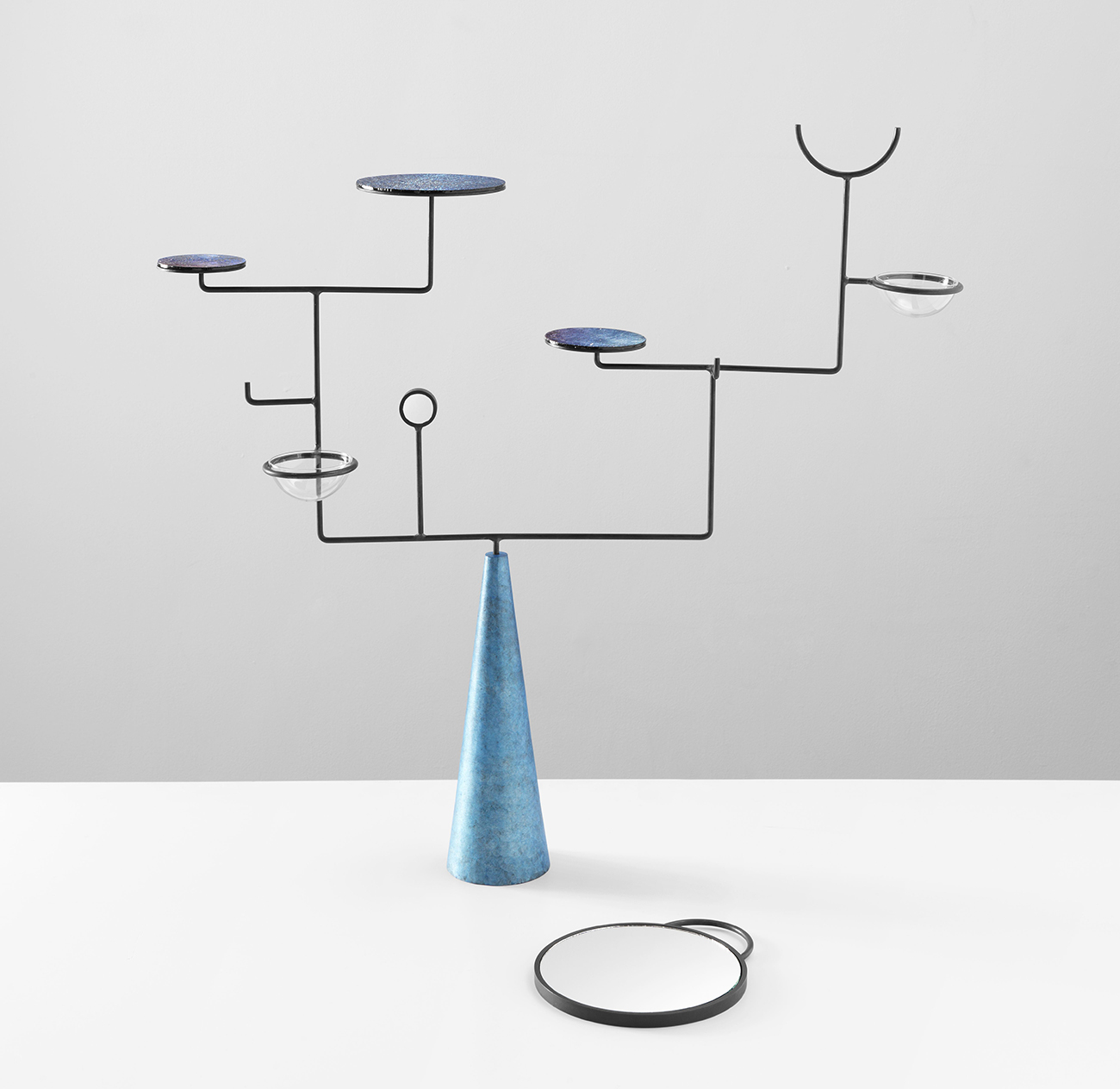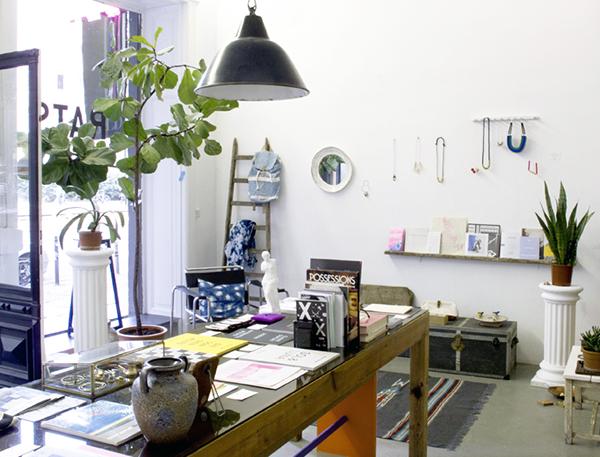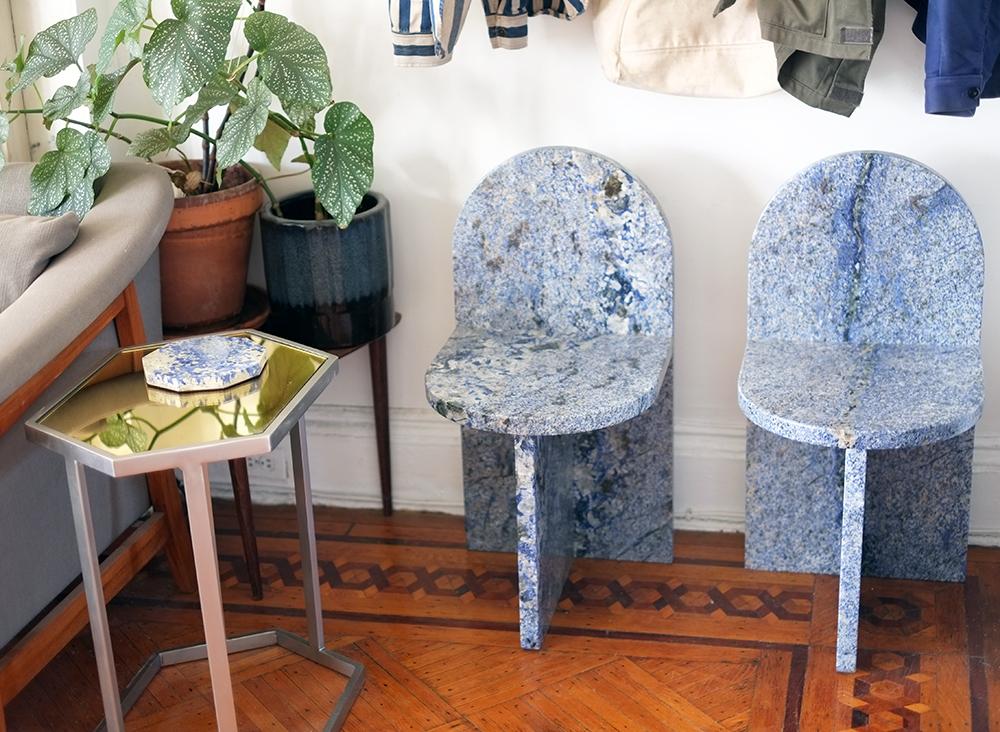
03.11.14
Q+A
Fort Standard’s Gregory Buntain on his Tombstone Chairs
From an outside perspective, the Brooklyn furniture-design studio Fort Standard exudes the aura of a successful business with a clear DNA. Yet that wasn’t always the case: When co-founders Ian Collings and Greg Buntain first joined forces in 2011, after graduating together from Pratt, they had no idea what direction to take — they simply dove headlong into the making process. “We had one goal: to do our own thing,” Buntain said in a recent interview. Their stock may have risen since then, but behind the scenes, the pair still make an effort to keep things loose; to maintain a sense of discovery in their shared practice, they both do separate solo work on the side, little personal experiments and objects they create for their own homes. Occasionally these prototypes are developed into Fort Standard products, but most of the time they go unseen, as was the case for Buntain’s marble Tombstone chairs before we spotted them on Instagram. When we approached the designer to ask him if we could share them with you in the interview below, it turned out he had a home full of personal pieces he’d also made but never shared with the public, which he was kind enough to walk us through in the second half of this story.
Tombstone chairs
Before I learned about the Tombstone chairs, I never knew that you did side projects outside of Fort Standard. Have you always maintained this practice?
Yes, I’ve always worked on personal projects outside of Fort Standard, whenever I have time to. Ian and I both often stay after-hours and work on our own designs, which might seem weird to some people, but we feel lucky to work in the same place that we also really enjoy spending a decent amount of our free time. It’s important to me because it keeps my own personal creativity growing and evolving, which is also important to our shared studio practice. We each bring our own personal ideas and inspirations to the table until we find something that excites us both, and then we develop it together as an idea we can both sort of “own.” Lately I’ve been making a lot of furniture for myself, most of it practical (a dining table, storage shelves) but some of it more sculptural and minimal, like the Tombstone chairs.
How did the Tombstone series develop? And what did you intend to do with the chairs when you first decided to make them?
The idea for these chairs is actually probably a couple years in the making, which is funny because they’re so minimal. But the design took a bit of time to bake in my mind — I wanted to find the right details that would make the chairs exciting enough for me to make them a reality. The biggest idea was to fabricate them out of stone, because that allowed for a footprint that wouldn’t work as well in wood; the weight of the stone prevents the chairs from wanting to tip to one side or the other. I prototyped them in wood first (shown below) to make sure the proportions were right, and then I made the two Bahia Blue granite pieces. The second detail was to allow the material choice to inspire the design by referencing the sort of iconic, Halloween-y tombstone shape in all three parts of the chairs. I made them at first just because I thought they were really exciting, and when I saw a leftover piece of Blue Bahia at our stone cutter’s shop, that was the icing on the cake.
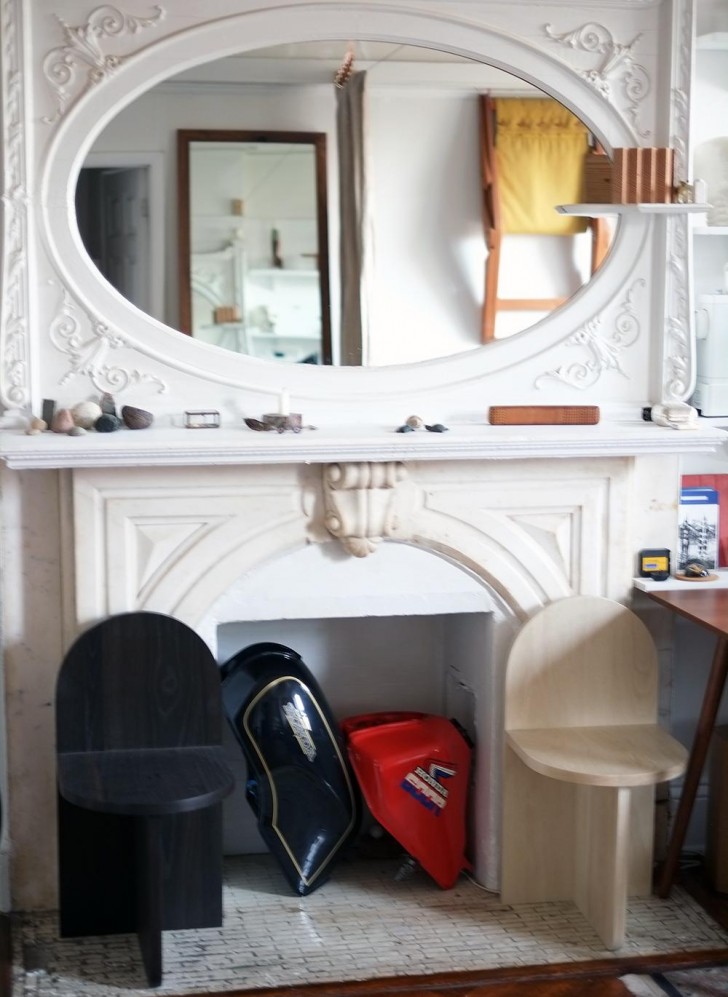
How did you actually fabricate the chairs?
The prototypes actually took longer for me to make than the stone versions because all I did was have the stone waterjet cut, had them put corresponding holes in all of the pieces, and then assembled them with steel dowels and epoxy.
Now that you’ve made them, how do you feel about them? What do you think they communicate about you as a designer apart from Fort Standard?
Right now Im feeling a little sore because I just took them home and carried them up to my 4th-floor walk-up; I definitely have more stone in my apartment than most 4th-floor walk-up dwellers (though Ian may be a close tie). Seriously speaking though, I’m not being too precious about them. I think they’re pretty badass, but the idea is complete for me now, and I’m already on to the next project — there’s always a laundry list of things I want to do. I think they’re a good representation of me as an individual designer, but my personal projects can also be very technical and complex, so there’s definitely a big range for me to explore and continue to develop.
Do you have any plans at all for this series moving forward, or for your solo work in general?
I am interested in eventually doing more of my own solo work, and I know Ian is as well. It’s a conversation we have all the time, as it’s equally important to us both. When you spend so much time designing so closely with one other person I think it’s pretty natural to want to have total creative freedom. Right now we’re both focused on FS and do our own thing whenever we have the chance, but there will definitely be some solo work to show in the future! As for the Tombstone series, I have no immediate plans for it, but would be interested in pushing it further somehow.
Around Greg Buntain’s house
“I designed this desk during a little collaboration project between Pratt and West Elm. The Sonderstuhl chair in front if it I designed and built in 2009, the year after I graduated from Pratt. I only made two of them, and I gave the other one to my Mom. The white oak barrel–like garbage can underneath the desk is something I made when I got sick of looking at an Ikea can I had.”
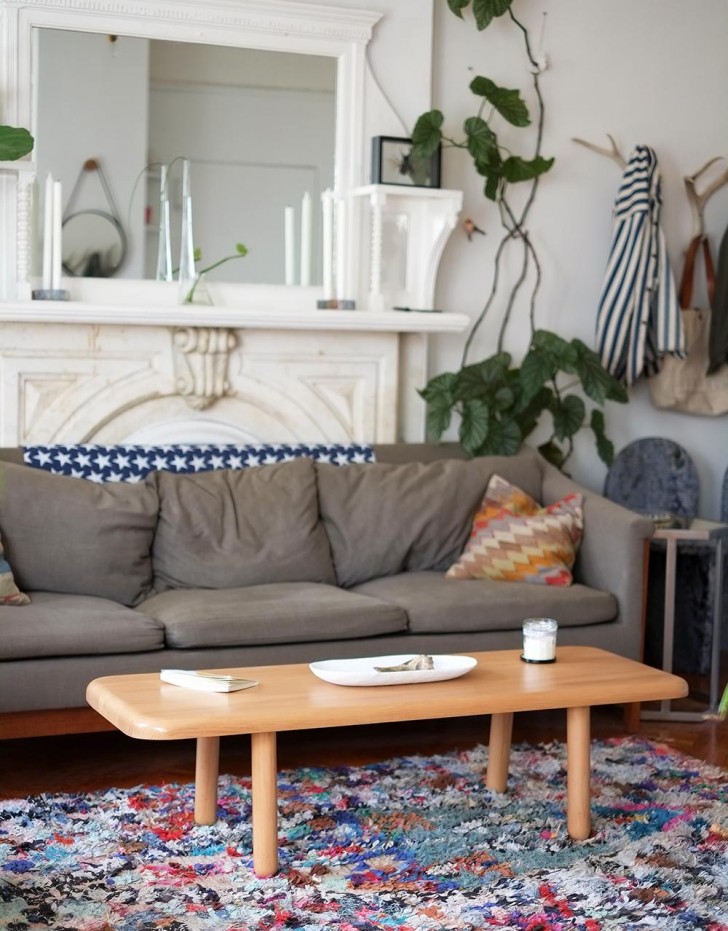
“I wanted to make a really soft table that would be nice to put your feet up on. I cut large angles onto the bottom of the table surface, which creates the angle of the legs. I made this from a reclaimed Doug Fir beam. I bought the sofa frame on craigslist for $100 and reupholstered it myself using fabric I got from Walter Knoll in Germany during an internship I had there back in the day.”
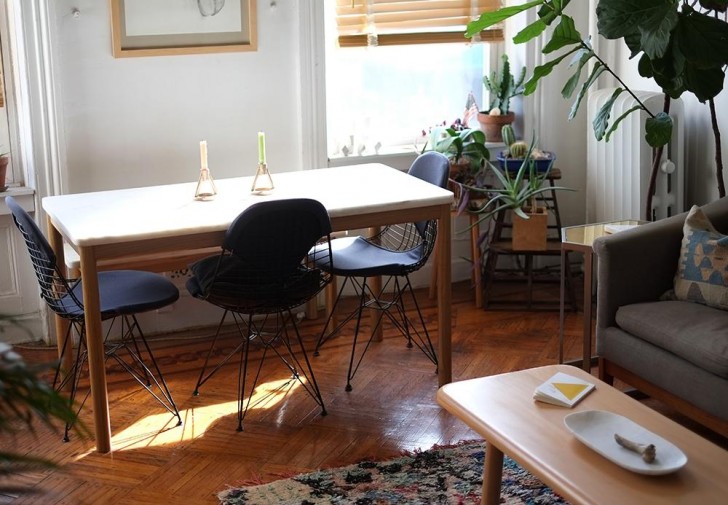
“Fort Standard now makes a similar table that will be debuting at the AD Home show next week, but this marble top version I originally made for myself, which is where the idea originated.”
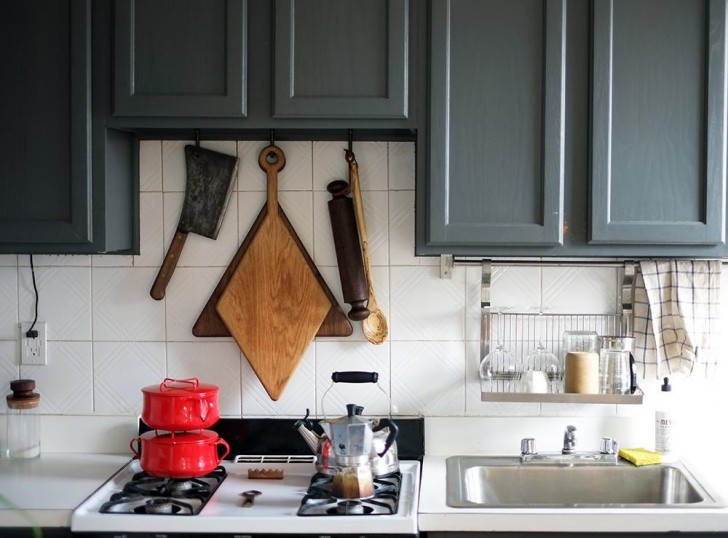
“The cutting boards hanging above my stove are more prototypes I made for myself that eventually ended up becoming a Fort Standard product. I’d hung the rolling pin (which I turned for my girlfriend Isabel), the giant spoon (which Isabel actually made), and the cleaver, which left me with a triangular negative space on the wall — that gave me the idea of making these long-handled boards to fill it.”
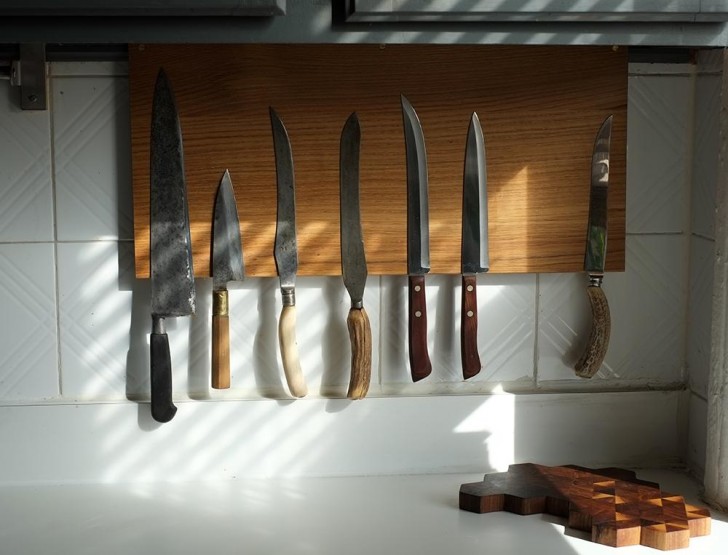
“To make this magnetic knife rack for my kitchen, I embedded large rare-earth magnets into the back of a quarter-sawn white oak board. The geometric cutting board below was made from triangular cut-off scraps that I glued together into a long hexagonal rod before chopping it up and gluing them together on a single plane to create an end-grain cutting surface.”
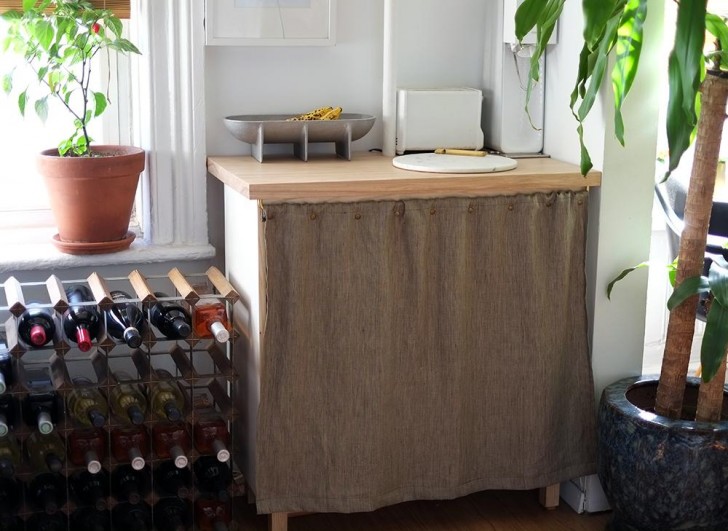
“I didn’t make this wine rack, actually — I found it an alley near our studio in Red Hook a couple years ago. I did, however, make the ‘appliance garage’ to its right, which holds my microwave, toaster oven, and juicer and is probably the best addition to my apartment that I’ve ever made. It not only freed up kitchen counter space, but it also created another counter. I made the little curtain that slides on a brass bar out of Japanese chambray. The bowl sitting on top of it is a raw version of Fort Standard’s Standing Bowls, before they get powder-coated.”
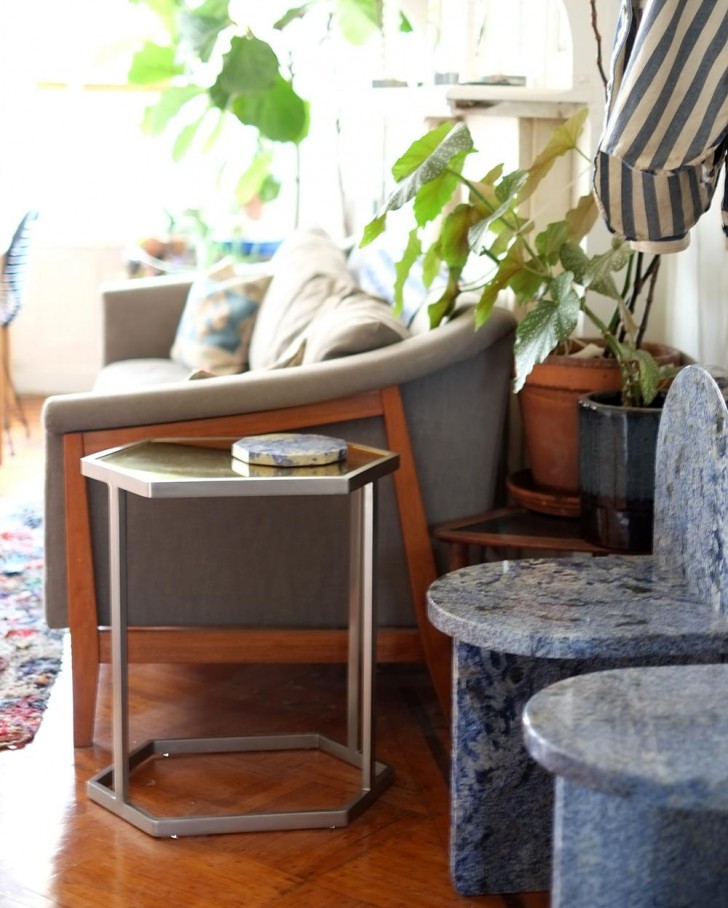
“I grew up with these metal side tables, but the original brass-plated frames had seen better days, so I had them nickel-plated instead and then had gold mirror cut to replace the original clear-glass tops.”
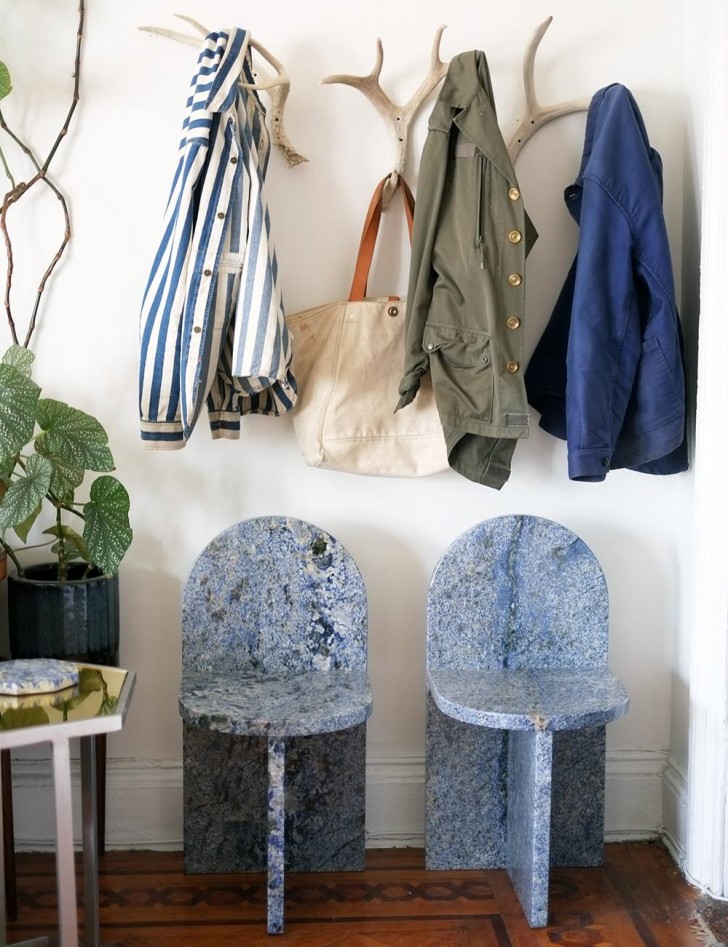
“I gave the living room some readymade coat hooks by screwing antlers into the wall.” 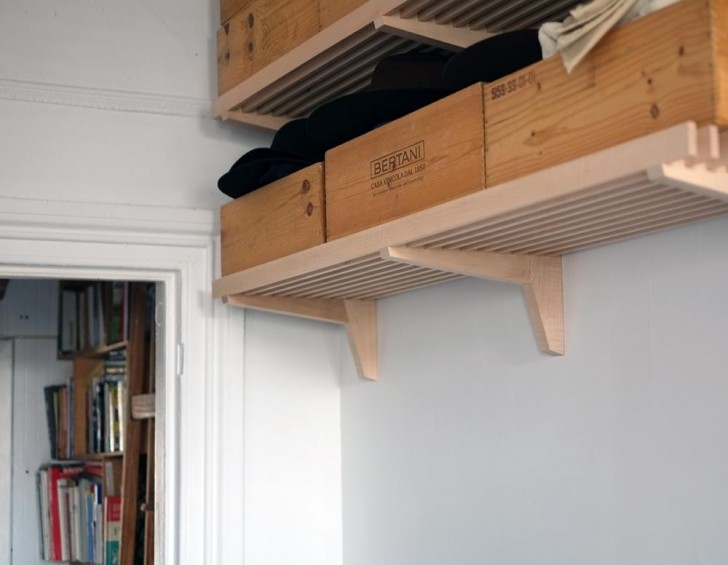
“I made these slat shelves when I was on a kick to get rid of all the Ikea furniture I had. I made them out of some scrap boards we had laying around, so one is Sycamore and one is Maple, but they look so similar that most people would never know.”
